If you’ve always dreamed of having a furry companion but suffer from allergies, you’re not alone. Allergic reactions to dogs can put a damper on the joy of pet ownership, but fear not! There is hope for allergic individuals who still want to experience the love and companionship of a four-legged friend. In this article, we will explore the world of hypoallergenic dog breeds and discover which ones are suitable for those with allergies. Get ready to uncover potential furry friends that won’t have you reaching for the tissues and antihistamines!
Table of Contents
The Basics of Hypoallergenic Dog Breeds
What does hypoallergenic mean?
If you have allergies but still dream of having a furry friend, hypoallergenic dog breeds might be the perfect solution for you. The term “hypoallergenic” refers to dog breeds that are less likely to cause allergies or trigger allergic reactions in sensitive individuals. While no dog is completely allergen-free, hypoallergenic breeds produce fewer allergenic proteins, such as dander or saliva, which are the main culprits behind allergic reactions.
How do hypoallergenic breeds minimize allergies?
Hypoallergenic breeds minimize allergies in several ways. First and foremost, they have a reduced shedding ability, which means they don’t release as much hair or dander into the environment. This is significant because it’s not the hair itself that causes allergies but rather the proteins that accompany it. By shedding less, hypoallergenic breeds reduce the amount of allergens present in their surroundings.
Additionally, hypoallergenic breeds often have a different type of coat compared to other dogs. Their fur may be wiry, curly, or hair-like rather than typical. These unique coat types tend to trap allergenic particles and prevent them from becoming airborne, further reducing the risk of an allergic reaction.
Popular misconceptions about hypoallergenic dogs
There are a few misconceptions surrounding hypoallergenic dogs that need to be addressed. One common belief is that hypoallergenic breeds are completely allergen-free. This is not true. While they may produce fewer allergens, they still produce some and can still cause allergies in extremely sensitive individuals.
Another misconception is that hypoallergenic dogs are always small in size. While it is true that some hypoallergenic breeds are small, there are also medium and large hypoallergenic breeds available. The size of the dog does not determine its hypoallergenic nature; rather, it is the genetics behind the breed that plays a role in minimizing allergenic proteins.
Understanding these basics about hypoallergenic dog breeds is crucial before delving deeper into the topic of dog allergies and choosing the right hypoallergenic breed for you.
Understanding Dog Allergies
Causes of dog allergies
Dog allergies are primarily caused by exposure to allergenic proteins present in a dog’s dander, saliva, and urine. Allergenic proteins are substances that trigger an allergic reaction in sensitive individuals. When a person with allergies comes into contact with these proteins, their immune system overreacts, resulting in symptoms such as sneezing, coughing, itching, and watery eyes.
It’s important to note that it’s not the breed of the dog that causes allergies, but rather the specific allergenic proteins produced by each individual dog. Therefore, someone can be allergic to one dog of a certain breed and not be allergic to another dog of the same breed.
Common symptoms of dog allergies
Dog allergies can manifest in a variety of ways, and the severity of the symptoms can vary from person to person. Common symptoms include sneezing, coughing, wheezing, runny or stuffy nose, itchy and watery eyes, skin rashes or hives, and even difficulty breathing in severe cases.
It’s important to keep an eye out for these symptoms, especially if you are considering bringing a dog into your home. Consulting with an allergist can help determine if you are allergic to dogs and what specific steps you can take to manage your allergies.
Different types of dog allergens
When it comes to dog allergens, different types can trigger allergic reactions in susceptible individuals. The primary allergen is Can f 1, a protein found in a dog’s saliva and dander. This protein can easily become airborne and spread throughout the environment, causing allergies in sensitive individuals.
Other allergens include Can f 2, which is found in a dog’s urine and can cause skin reactions, and Can f 3, which is present in a dog’s serum and can lead to respiratory problems. By understanding these different types of dog allergens, you can better assess which hypoallergenic breeds might be suitable for you.
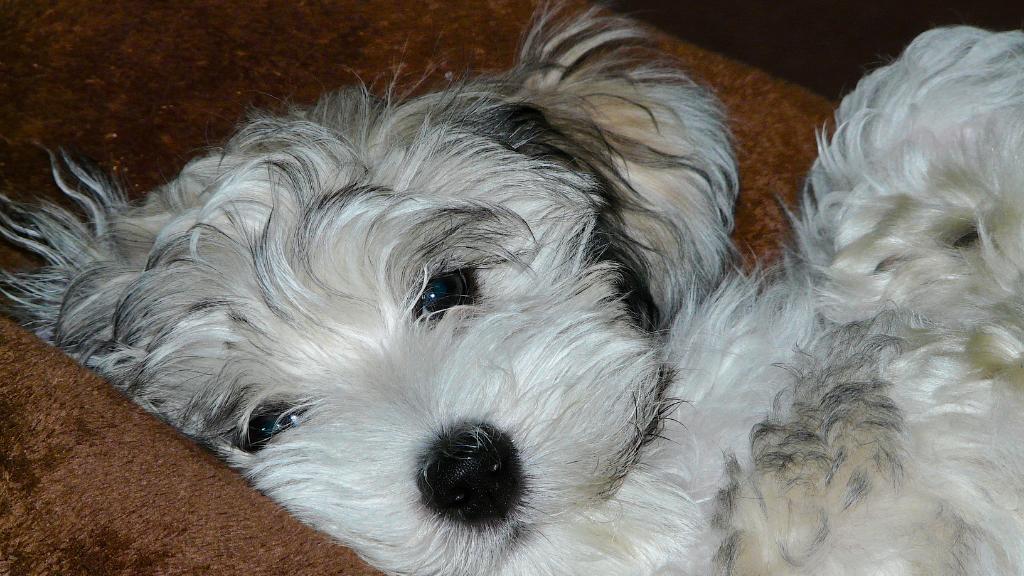
Factors to Consider Before Choosing a Hypoallergenic Breed
The severity of the individual’s allergies
Before diving into the world of hypoallergenic dog breeds, it’s essential to assess the severity of your allergies. While hypoallergenic breeds produce fewer allergenic proteins, they still produce some, and individuals with extremely severe allergies may still experience allergic reactions.
Consulting with an allergist is highly recommended to determine the specific triggers of your allergies and to what extent you are sensitive to them. This information will help you make an informed decision when choosing a hypoallergenic breed that is compatible with your allergies.
Lifestyle and living conditions
Another critical factor to consider before choosing a hypoallergenic breed is your lifestyle and living conditions. Some hypoallergenic breeds require more exercise and mental stimulation than others. If you lead an active lifestyle and have ample time to devote to your dog’s exercise needs, you may consider more energetic breeds that require more physical activity.
On the other hand, if you live in an apartment or have limited outdoor space, you may want to choose a hypoallergenic breed that is smaller in size and requires less exercise. Additionally, take into account whether you have other pets or children at home, as some hypoallergenic breeds may be more compatible with certain living arrangements.
Time and effort for grooming and maintenance
One factor that often goes hand in hand with hypoallergenic dog breeds is grooming and maintenance. While hypoallergenic breeds may shed less, their unique coat types often require regular brushing, trimming, and professional grooming to prevent matting and keep their coat in optimal condition.
Consider how much time and effort you are willing to devote to grooming and maintenance. If you are not a fan of regular grooming or prefer a low-maintenance dog, there are hypoallergenic breeds with shorter haircuts or less demanding grooming needs that may be more suitable for you.
Taking these factors into consideration will help you find a hypoallergenic breed that aligns with your allergies, lifestyle, and grooming preferences.
Characteristics of Hypoallergenic Dog Breeds
Non-shedding vs. low-shedding
When it comes to hypoallergenic dog breeds, it’s important to understand the difference between non-shedding and low-shedding breeds. Non-shedding breeds, such as Poodles, typically have hair-like fur that grows continuously, similar to human hair. These breeds require regular haircuts to maintain their coat length and prevent matting.
On the other hand, low-shedding breeds shed minimally but still have a coat that requires regular grooming to prevent tangles and maintain its overall health. Understanding these different coat types will help you choose a hypoallergenic breed that aligns with your grooming preferences.
Minimal dander production
One of the key characteristics of hypoallergenic dog breeds is their minimal dander production. Dander is tiny particles of dead skin that can trigger allergic reactions in sensitive individuals. Hypoallergenic breeds produce significantly less dander than non-hypoallergenic breeds, reducing the risk of allergies.
While no dog is completely dander-free, hypoallergenic breeds produce lower levels of dander, making them a better choice for allergy sufferers. Regular grooming and bathing can further minimize dander levels and ensure a comfortable living environment for both you and your dog.
Hypoallergenic coat types
Hypoallergenic breeds often have unique coat types that contribute to their hypoallergenic nature. Some breeds, such as Poodles and Bichon Frises, have curly or wavy coats that help trap allergenic particles and prevent them from becoming airborne. These coat types can also help reduce shedding, making them more tolerable for individuals with allergies.
Other hypoallergenic breeds, like the Portuguese Water Dog, have wiry double coats that shed minimally and produce fewer allergens. Understanding the different coat types of hypoallergenic breeds can help you choose a dog that doesn’t exacerbate your allergies.
Hypoallergenic Dogs and Crossbreeds
Are crossbreeds hypoallergenic?
Crossbreeds, also known as mixed breeds, are the result of mating two different purebred dogs. While there are no guarantees when it comes to crossbreed dogs’ hypoallergenic status, they may inherit the hypoallergenic characteristics from one or both parent breeds.
If one parent is a hypoallergenic breed, there is a chance that the crossbreed offspring will have hypoallergenic traits. However, it’s important to note that not all crossbreeds will necessarily be hypoallergenic, as it depends on the specific genetics inherited from the parent breeds.
Consulting with a breeder or getting to know the specific parent breeds of a crossbreed can give you a better idea of whether the dog is likely to be hypoallergenic.
Popular hypoallergenic crossbreeds
Various popular hypoallergenic crossbreeds have gained popularity in recent years. These crossbreeds often combine the desirable traits of hypoallergenic breeds, making them a great choice for individuals with allergies.
Examples of popular hypoallergenic crossbreeds include the Labradoodle (Labrador Retriever and Poodle mix), Goldendoodle (Golden Retriever and Poodle mix), and Cockapoo (Cocker Spaniel and Poodle mix). These crossbreeds often inherit the non-shedding or low-shedding coat characteristics of their hypoallergenic parent breed, offering the potential for reduced allergen production.
If considering a hypoallergenic crossbreed, it’s important to research and understand the characteristics and care requirements of both parent breeds to assess their compatibility with your allergies and lifestyle.
Top 7 Large Hypoallergenic Dog Breeds
Below are a variety of medium to large hypoallergenic dog breeds. Remember, there are numerous options beyond the ones listed here. When contemplating a hypoallergenic breed, it’s crucial to delve into each breed’s unique characteristics, exercise requirements, and grooming needs to discover the ideal match for your lifestyle.
1. Giant Schnauzer

This majestic dog breed reaches a healthy weight of around 95 pounds, making them a seriously large hypoallergenic option. Giant Schnauzers have a dense, wiry coat that sheds minimally and requires regular brushing. They are intelligent, loyal, and playful companions, but their size and energy level may not be suitable for all living situations.
2. Irish Water Spaniel

Sporting a distinctive reddish-brown coat, the Irish Water Spaniel is a lively and intelligent breed. These dogs are relatively low-shedding and require regular brushing to prevent matting. Their playful and energetic nature makes them a good choice for families with children and active lifestyles.
3. Standard Poodle

Standard Poodles are known for their intelligence, athleticism, and elegant appearance. Their curly, single-layer coat is non-shedding and hypoallergenic, but requires regular grooming to prevent matting. Standard Poodles are highly trainable and excel in various activities, including agility, obedience, and therapy work.
4. Portuguese Water Dog

Originally bred to assist fishermen in Portugal, the Portuguese Water Dog is a strong and athletic breed with a thick, curly coat that sheds minimally. They are known for their intelligence, loyalty, and trainability, making them excellent companions for families or active individuals. Portuguese Water Dogs require regular grooming and exercise.
5. Airedale Terrier

The largest of the terrier breeds, the Airedale Terrier is a fearless and energetic dog with a wiry, non-shedding coat. They require regular brushing and stripping to maintain their coat and are best suited for active owners who can provide them with plenty of exercise and mental stimulation.
6. Samoyed
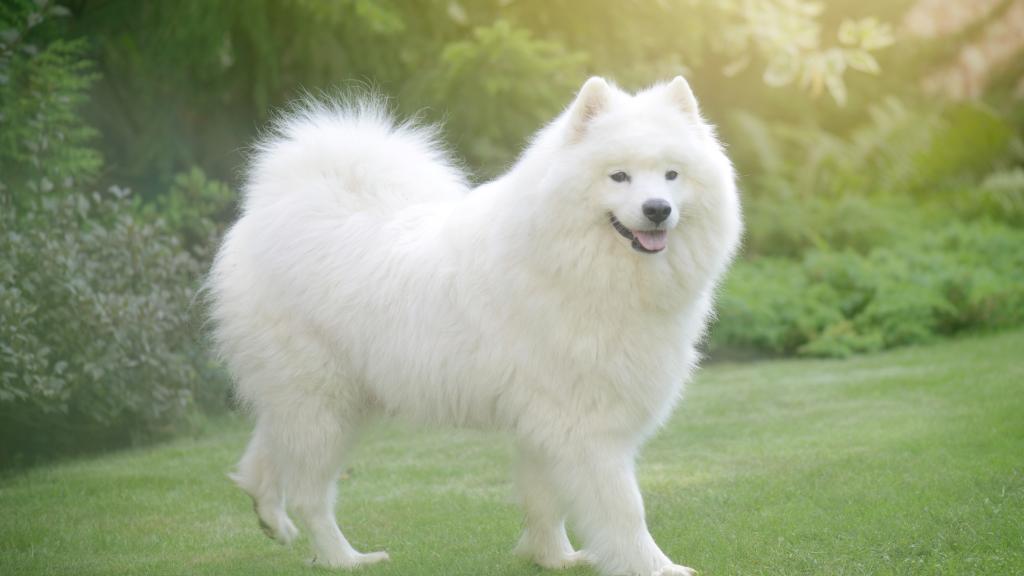
This beautiful dog breed with a thick, white coat is surprisingly hypoallergenic. Their coat sheds seasonally but is otherwise low-maintenance. Samoyeds are intelligent, friendly, and playful dogs, but require regular exercise and grooming. They are not recommended for first-time dog owners due to their high energy levels and potential for stubbornness.
7. Komondor
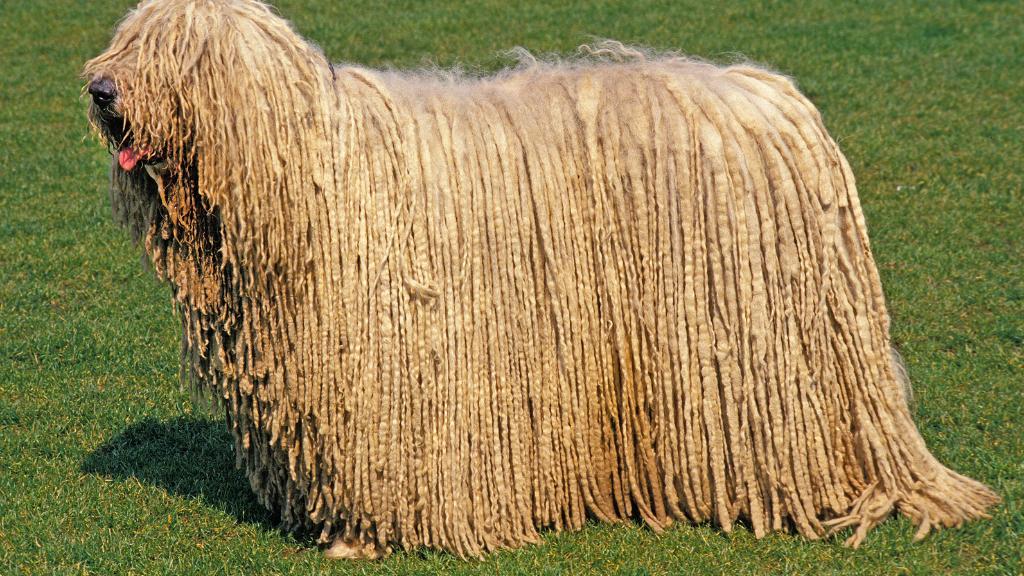
This ancient Hungarian breed is known for its distinctive dreadlock coat, which acts as a natural weatherproof shield and sheds minimally. Komondors are intelligent, loyal, and protective companions, but their size, independent nature, and grooming needs require experienced owners.
top 7 Small Hypoallergenic Dog Breeds
Here are some of the more popular small hypoallergenic dog breeds. Keep in mind there are many more to explore. When considering a hypoallergenic breed, it’s important to research each breed’s specific characteristics, exercise needs, and grooming requirements to find the best match for you.
1. Toy Poodle
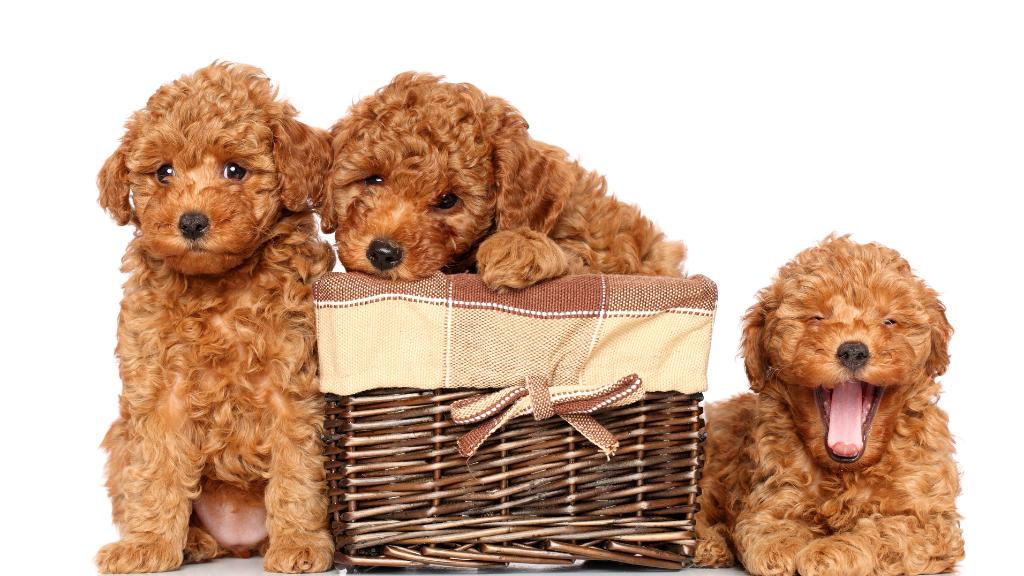
These tiny versions of the Standard Poodle are renowned for their hypoallergenic coat, intelligence, and playful personalities. Their curly and fluffy coat sheds minimally but requires regular brushing and professional grooming every 4-6 weeks to prevent matting. Toy Poodles are great companions for individuals of all ages and activity levels, adapting well to both apartments and larger living spaces.
2. Yorkshire Terrier

Yorkshire Terriers, also known as Yorkies, are small but spunky dogs with a long, flowing coat that resembles human hair. They are intelligent, loyal, and relatively low-maintenance, requiring regular brushing and professional grooming every 4-6 weeks. Yorkies are great companions for people with active lifestyles and small apartments.
3. Miniature Schnauzer

The Miniature Schnauzer is a small dog with a big personality. They are intelligent, playful, and relatively low-maintenance, requiring regular brushing and professional grooming every 2-3 months. Their wiry coat sheds minimally, making them a good choice for allergy sufferers. Miniature Schnauzers are great companions for families with children or active individuals.
4. Havanese
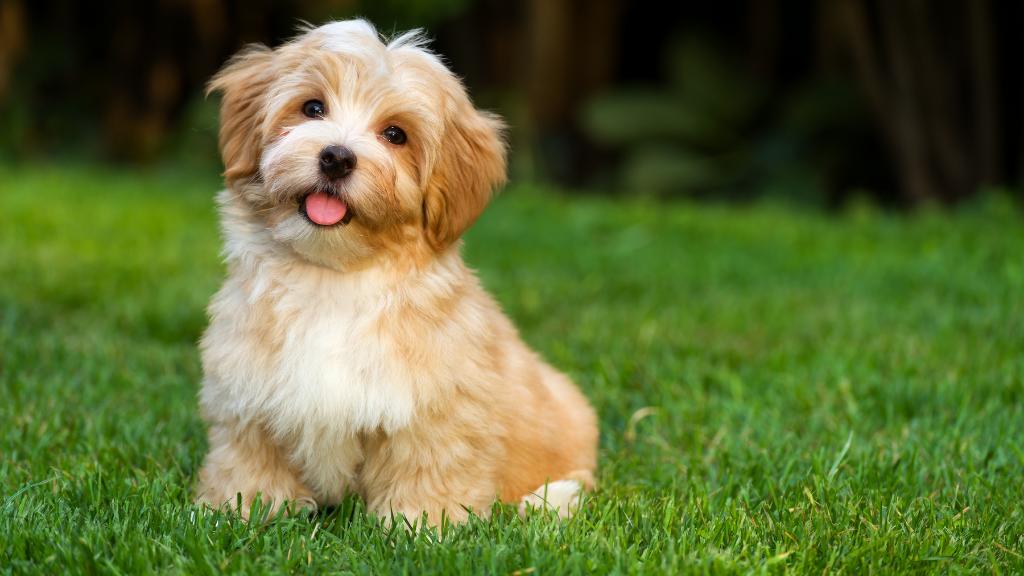
These charming Cuban companions are known for their playful, affectionate, and gentle nature. Their hypoallergenic coat is silky and soft, requiring daily brushing and regular professional grooming every 4-6 weeks to prevent matting. Havanese are incredibly adaptable and thrive in various living environments, making them excellent companions for families with children, seniors, or individuals with smaller living spaces.
5. Shih Tzu

These charming little dogs are known for their long, flowing coat and playful, affectionate nature. Shih Tzus are relatively low-shedding but require daily brushing and regular professional grooming to maintain their coat. They are great companions for families with children or individuals who live in smaller spaces.
6. Bichon Frise

These adorable bundles of white fluff are known for their gentle, playful, and affectionate nature. Their hypoallergenic coat is soft and curly, requiring regular brushing and professional grooming every few months. Bichons are excellent companions for families with children or individuals who live in smaller spaces.
7. Maltese

Another fluffy white wonder, the Maltese is known for its elegant appearance and gentle personality. These dogs are highly intelligent and playful, making them great companions for active individuals or seniors. Their long, silky coat requires daily brushing and regular professional grooming to prevent mats and tangles.
Grooming and Maintenance for Hypoallergenic Breeds
Brushing and bathing routines
Proper grooming and maintenance are essential for keeping hypoallergenic breeds healthy and comfortable. Regular brushing helps prevent matting and tangling of their coats, which can trap allergens. Brushing also helps remove loose hair and dander, reducing the amount of allergens in your home.
Bathing is another important aspect of grooming for hypoallergenic breeds. However, it’s essential not to overbathe them, as excessive bathing can lead to dry skin and irritations. Consult with your veterinarian or a professional groomer to determine the appropriate bathing frequency for your specific breed.
Trimming and haircuts
For breeds with hair-like fur, such as Poodles, regular trimming and haircuts are necessary to maintain their coat length and prevent it from becoming too long and unmanageable. These breeds typically require professional grooming every few weeks to keep their coats in optimal condition.
On the other hand, breeds with wiry coats, like Schnauzers, require regular trimming and hand-stripping to maintain their distinctive look and prevent their fur from matting. Regular professional grooming or learning how to properly trim their coat yourself is important for these breeds.
Tips for controlling allergens in the home
While hypoallergenic breeds produce fewer allergens, there are still steps you can take to minimize allergens in your home. Regularly vacuuming carpets and furniture, using air purifiers, and washing fabrics, such as bedding and curtains, can help reduce the amount of allergens in the environment.
Creating designated “dog-free” zones in your home, such as bedrooms or certain furniture, can also help minimize exposure to allergens. Additionally, maintaining a clean and well-groomed dog, with regular baths and brushing, can significantly reduce the amount of allergens they carry.
Implementing these tips and creating an allergen-friendly environment can help manage allergies while enjoying the companionship of a hypoallergenic dog.
Allergen Testing for Hypoallergenic Dogs
Allergist consultation and testing
If you are considering bringing a hypoallergenic dog into your home, it’s highly recommended to consult with an allergist and undergo allergen testing. An allergist can help identify the specific allergenic proteins that trigger your allergies and advise on the best course of action.
Allergen testing typically involves skin tests or blood tests to determine which allergens you are specifically reactive to, including dog allergens. This information will help guide you in choosing a hypoallergenic breed that produces fewer allergenic proteins or finding other solutions to manage your allergies.
Identifying specific allergens
Allergen testing can help identify the specific dog allergens you are sensitive to. This information is crucial when choosing a hypoallergenic breed because even within hypoallergenic breeds, there can be individual variations in protein production.
By knowing which specific allergenic proteins you are reactive to, you can focus on choosing a hypoallergenic breed that has lower levels of those particular proteins. This knowledge helps increase the chances of finding a hypoallergenic dog that you can comfortably live with.
Choosing the right breed based on testing
Once you have undergone allergen testing and identified the allergenic proteins that trigger your allergies, you can make a more informed decision when choosing a hypoallergenic breed. Armed with this knowledge, you can research specific breeds and their protein production levels to find one that aligns with your allergies.
For example, if you are specifically reactive to Can f 1, the primary dog allergen found in saliva and dander, you may want to choose a breed with lower Can f 1 production. All hypoallergenic breeds produce less allergenic proteins overall, but understanding the specific proteins that affect you can help guide your decision-making process.
Living with a Hypoallergenic Dog
Creating an allergy-friendly environment
Living with a hypoallergenic dog requires creating an allergy-friendly environment to minimize exposure to allergens. This includes regular cleaning, vacuuming carpets and furniture, and using air purifiers to reduce airborne allergens.
Designated “dog-free” zones, such as bedrooms or specific furniture, can help limit allergen exposure in certain areas of your home. It’s also important to maintain a consistent grooming routine for your hypoallergenic dog, including regular brushing and bathing, to minimize shedding and dander production.
By creating an allergy-friendly environment, you can enjoy the companionship of your hypoallergenic dog while managing your allergies effectively.
Tips for managing allergies while owning a dog
Living with a hypoallergenic dog requires some additional steps to manage allergies effectively. Here are some tips to help you navigate life with your furry friend:
- Wash your hands after petting or playing with your dog, especially before touching your face or eyes.
- Avoid allowing your dog to sleep in your bed or spend excessive time on furniture.
- Regularly wash your dog’s bedding and toys to minimize allergen buildup.
- Take allergy medication or consult with your allergist on appropriate allergy management strategies.
- Keep up with regular grooming and maintenance for your dog, including brushing and bathing, to minimize allergen production.
- Consider using allergy-friendly upholstery and fabrics in your home to reduce allergen retention.
- Keep your home well-ventilated and use HEPA filters in your HVAC system to improve indoor air quality.
- Minimize dust accumulation by regularly dusting and vacuuming your home.
- Avoid touching your face or eyes after touching surfaces that may have come into contact with allergens, such as your dog’s toys or bedding.
By implementing these tips and staying vigilant about managing allergies, you can enjoy the benefits of owning a hypoallergenic dog while keeping your allergies under control.
Benefits of owning a hypoallergenic dog
Owning a hypoallergenic dog can bring numerous benefits for individuals with allergies. These benefits include:
- Reduced allergen exposure: Hypoallergenic breeds produce fewer allergenic proteins, minimizing exposure to allergens and reducing the risk of allergic reactions.
- Companionship without allergy flare-ups: Allergy sufferers can enjoy the love and companionship of a dog without constantly dealing with allergy symptoms.
- Lower shedding: Hypoallergenic breeds shed less, leading to fewer hair and dander particles in your home and a cleaner living environment.
- Reduced need for allergy medications: With fewer allergens present, allergy medications may be needed less frequently, improving overall well-being and reducing reliance on medication.
- Suitable for families with allergies: Hypoallergenic breeds can be an ideal choice for families with members who have allergies, allowing everyone to enjoy the benefits of pet ownership.

Alternative Options for Allergic Dog Lovers
Considerations for allergic individuals without hypoallergenic breeds
If you are allergic to dogs but cannot have a hypoallergenic breed, there are alternative options available for you to enjoy the companionship of a pet. Some individuals may opt for other types of pets that are typically less allergenic, such as cats with low allergenic proteins or small animals like hamsters or guinea pigs.
It’s important to note that individuals with allergies should research the specific pet they are considering and consider consulting with their allergist before making a decision. While certain pets may be considered hypoallergenic or less allergenic compared to dogs, individual sensitivities can still vary.
Non-traditional pets for allergy sufferers
If you are allergic to both dogs and cats or have severe allergies, non-traditional pets may be a suitable option. These can include reptiles, fish, birds, or even insects, depending on your interests and comfort level with non-traditional pets.
Non-traditional pets typically do not produce the same types of allergenic proteins as dogs or cats, making them potentially more tolerable for individuals with allergies. However, it’s essential to research the specific requirements and care needs of each non-traditional pet to ensure they are manageable and compatible with your allergies.
Speak with your allergist or do thorough research to determine the best alternative pet option for your specific allergies and preferences.
Final Thoughts on Hypoallergenic Dog Breeds
When it comes to types and characteristics of dog breeds, a common prerequisite for potential owners is a hypoallergenic breed. While it’s important to remember that no dog breed is completely hypoallergenic, choosing a hypoallergenic breed can significantly improve the quality of life for individuals with allergies. With proper care, management, and an understanding of your allergies, owning a hypoallergenic dog can be a joyful and fulfilling experience. The companionship of a hypoallergenic dog can contribute to a sense of emotional well-being, providing loyal and affectionate support to its owner.

